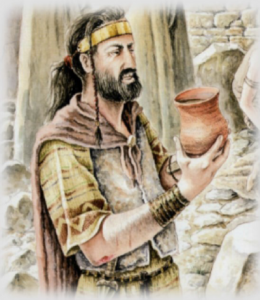Jonathan Carlyon is an associate professor of Spanish in the Department of Languages, Literatures, and Cultures.

When Spanish conquerors first arrived to Cuba, they were struck by the new varieties of food. One writer, Gonzalo Fernández de Oviedo (1478-1557), wrote in his Summary on the Natural History of the Indies that the New World held numerous meats and fruits. For example, in his chapter on armadillos, Oviedo declared: “They are a delicious treat … I have eaten them sometimes, and they are better tasting than goat.”
In a later chapter, he discussed vines and grapes, saying: “in those parts of the main land in the mountains and wooded forests one often finds very good wild vines, very full of bunches of grapes, not small, but even larger than those in Spain raised in groves, and not so sour, but better and of better taste, and I have eaten them many times and in great quantity.”

At first glance, one sees the Spanish Conquistador cataloging the spoils of conquest. However, Oviedo’s reference to grapes betrays a hidden grammar of an earlier conquest of the Iberian peninsula by the Roman empire. His focus on grapes, that is, speaks to Spain’s own legacy as a conquered country. The Celts and Iberos of indigenous Spain may have known about wine, but they grew wheat and barley, and they made beer.
Beer and wine form a counterpoint. Wine belongs to the conqueror. Beer, so we are told, pertains to a lower class. In his book Cuban Counterpoint, Fernando Ortiz wrote similarly of tobacco and sugar. He argued that tobacco and sugar, “contradict each other economically and socially.”
This cultural tension, according to Ortiz, served to define Cuba’s relatively quick, 500 year cultural evolution. However, if in Cuba sugar and tobacco achieved some harmony, in Spain the counterpoint between beer and wine took a more dissonant turn.
For example, the Roman historian Pliny the Elder (23AD – 79AD) explained: “From the cereals are also made beverages called zythum in Egypt, caelia and cerea in Spain; the froth of all these is used by women as a cosmetic for the face. But to the beverages themselves, it will be best to pass on to a discussion of wine.”

Additionally, Paulus Orosius (375 AD – 418 AD) indicated these indigenous Spaniards (known as Celtiberians) would fight the conquering Romans, “after having drunk a large quantity, not of wine–which doesn’t abound in his area–but of an elaborately made wheat juice, a juice they call ‘caelia’ because it is necessary to heat it.”
In these examples, we see the cultural tension between beer and wine in pre-Roman Spain. Furthermore, we notice that before Spain imposed its colonialism on the Caribbean, turning Armadillos into exotic fare, the Romans subordinated Celtiberian beer to the development of their imperial wine.
Culinary decisions reflect cultural decisions. In a city like Fort Collins, well-known for its many quality beers, the example of pre-Roman Caelia reminds us of the need always to expand our participation in a diversity of cultural counterpoints.
